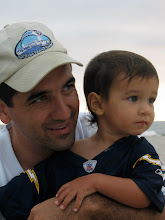
May 7, 2009 - May 21, 2009
Maren was anesthetized and wheeled into catheter surgery around her 24th hour of life. The surgery, a pulmonary valvotomy and valvuloplasty, was to open up her pulmonary valve so that blood could flow from her right ventricle to her lungs. This required two steps: (1) using a radiofrequency wire, the doctors burned a pinhole through the sealed valve; and (2) using an inflatable balloon, they force open the valve. This surgery went well, and after 3 hours, Maren was wheeled backed to the NICU for recovery.
With a PAIVS baby, there is a broad spectrum; the morphology of each baby's heart and subsequent treatment plan is unique and highly individualized. Some babies will have the valve pierced, and flow will return through the ventricle in an amount sufficient such that the baby can survive without any further intervention. This is the case in maybe 10 percent of PAIVS babies. In the vast majority, after opening the valve, the flow is slow to return through the right ventricle. Accordingly, the baby still needs an alternate source of blood to the lungs in order to survive. The infusion of the drug PGE, by keeping open the PDA connection from the Aorta to the Pulmonary Artery, accomplishes this task in the short run. However, PGE infusion is not a sustainable approach, as it has many side effects. After Maren's initial surgery, the next week or so was spent closely monitoring Maren and attempting to wean her off of PGE, allowing her PDA to close naturally, and measuring how much oxygen she had in her blood as the PDA closed, which stat gives an indication of whether there is flow to the lungs through the ventricle.
In Maren's case, she was among the majority that could not survive with the additional blood supply through the PDA. Accordingly, two options were available: (1) open surgery for insertion of a shunt (known as a Blalock-Taussig Shunt); or (2) a closed catheter surgery insertion of a wire-mesh stent into the existing PDA. A shunt is literally the insertion of a separate extra pipe to connect two blood vessels. Here, it would be a pipe connection into the pulmonary artery to provide additional blood to the lungs. The PDA could then close up, as it wanted to, and this pipe would provide blood to the lungs. The stent accomplishes the same thing, but it uses the existing connection of the PDA by just propping it open. Which path is the right choice is a very difficult assessment decision for the doctors. Here, Maren was a good candidate for option 2, the stent, and the stent was inserted by Maren's cardiologist via the catheter procedure on May 19, 2009.
Maren recovered from the stent surgery quickly and on May 21, 2009, we were checked out of the NICU and sent directly home for some much needed Family Time!





